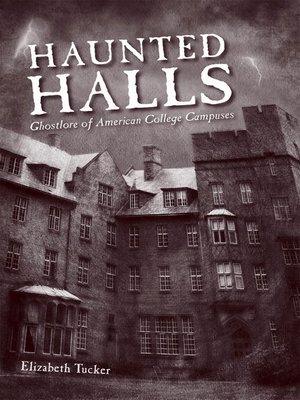
Sign up to save your library
With an OverDrive account, you can save your favorite libraries for at-a-glance information about availability. Find out more about OverDrive accounts.
Find this title in Libby, the library reading app by OverDrive.



Search for a digital library with this title
Title found at these libraries:
| Library Name | Distance |
|---|---|
| Loading... |
Why do so many American college students tell stories about encounters with ghosts? In Haunted Halls, the first book-length interpretive study of college ghostlore, Elizabeth Tucker takes the reader back to school to get acquainted with a wide range of college spirits. Some of the best-known ghosts that she discusses are Emory University\'s Dooley, who can disband classes by shooting professors with his water pistol; Mansfield Uni-versity\'s Sara, who threw herself down a flight of stairs after being rejected by her boyfriend; and Huntingdon College\'s Red Lady, who slit her wrists while dressed in a red robe. Gettysburg College students have collided with ghosts of soldiers, while students at St. Mary-of-the-Woods College have reported frightening glimpses of the Faceless Nun.
Tucker presents campus ghostlore from the mid-1960s to 2006, with special attention to stories told by twenty-first-century students through e-mail and instant messages. Her approach combines social, psychological, and cultural analysis, with close attention to students\' own explanations of the significance of spectral phenomena. As metaphors of disorder, insanity, and school spirit, college ghosts convey multiple meanings. Their colorful stories warn students about the dangers of overindulgence, as well as the pitfalls of potentially horrifying relationships.
Besides offering insight into students\' initiation into campus life, college ghost stories make important statements about injustices suffered by Native Americans, African Americans, and others.
Elizabeth Tucker is associate professor of English at Binghamton University. She is the author of Campus Legends: A Handbook and has published widely in folklore journals.







